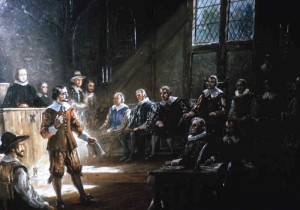Virginia Population 2013
The United States Census Bureau estimates that the population of Virginia in 2013 was 8,185,867, which is ranked the 12th largest population in the United States. Based on the last census in 2010, this shows a 2.3% increase in the population of the state of Virginia. Based on the population and based on the area of the state, the population density of the state is about 207 people per square mile, ranked the 14th largest density in the United States.
Virginia Population Projections
Based on the historical trends of the state and expected migration, birth, and death rates, the population is expected to reach approximately 8.811 million people by the year 2020, which is an approximate 7.6% increase from the current population. By the year 2030, the population is expected to reach 9.645 million people, which is an approximate 17.8% increase from the current population. By the year 2040, the population is expected to reach 10.53 million people, which is an approximate 28.6% increase from the current population.
Virginia Land Mass
The state of Virginia is about 430 miles long and 200 miles wide with a square area of 42,769 square miles, making it the 35th largest state in the country. Of the 42,769 square miles, 3,171 square miles are covered by water. The highest point in the state of Virginia is Mount Rogers, reaching 5,729 feet above sea level. The lowest point in the state is at the Atlantic Ocean, which reaches sea level. The geographic center of Virginia is located in Buckingham County, 5 miles southwest of Buckingham. Virginia is bordered by five states: Kentucky, West Virginia, Maryland, Tennessee, and North Carolina. The Atlantic Ocean borders the state on the east.
Virginia is broken up into five distinct geographic land areas: the Atlantic Coastal Plain, the Piedmont, the Blue Ridge, the Appalachian Ridge and Valley Region, and the Appalachian Plateau. The Atlantic Coastal Plain lies along the border near the Atlantic Ocean. This area is filled with lowlands, marshes, and swamps. To the west of this region lies the Piedmont, which is the largest land area in the state. This area is mainly made up of rolling plains. To the west of this region lies the Blue Ridge, which is the main mountain range in the Appalachian Mountains. The highest point in the state resides in the Blue Ridge portion of the state. To the west of the Blue Ridge lies the Appalachian Ridge and Valley Region. The Great Valley is part of this area, which is a series of valleys divided by mountains. There are also a lot of caverns in this region. Lastly, the Appalachian Plateau lies along the western edge of the state. This area is filled with rivers, streams, and forests.
Virginia Demographics
Of the approximate 8.186 million people in the state of Virginia, about 50.9% of the population is female, while 49.1% is male. Also, approximately 71% of the population identifies as white (including Hispanic or Latino). But, out of that 71%, about 8% do identify as Hispanic or Latino and the other 63% as Caucasian. Those that identify as Black or African American make up 20% of the entire population of the state of Virginia. The rest of the population is made up of those that identify as Asian, American Indian, Alaskan Native, Hawaiian, other Pacific Islanders, or those that identify as two or more races. These other races make up about 9% of the Virginia population. The Asian population makes up 6% out of that 9%.
Visit Alexandria Virginia
 Virginia Religion
Virginia Religion
The population of Virginia identifies as religious at a rate slightly lower than the national average. About 45% of the state population identifies as religious, compared to the national average of 49%. Out of the 35%, about 12% identify as members of the Church of Latter Day Saints, otherwise known as Mormonism, making it the largest denomination in the state of Virginia. The next largest denomination in the state is the Catholic Church, making up 9% of the total population. All the other Christian denominations make up about 20.5% of the population. Those who identify as Jewish, Islamic, or Eastern religions only make up 3.5% of the population. About 2.7% of the population identifies as members of Islam, compared to the national average of 0.8%.


